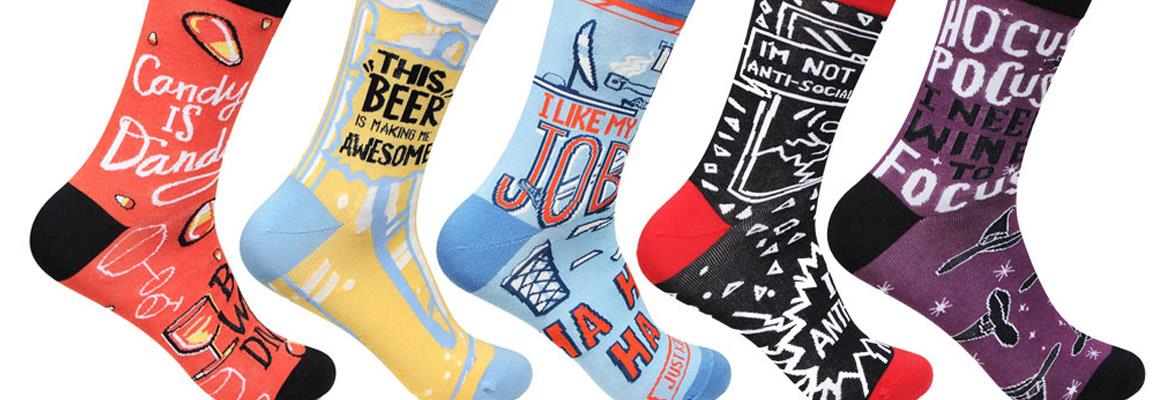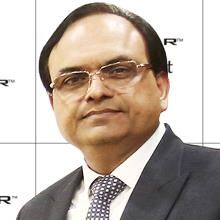Socks play vital role in absorbing moisture, says RK Jain
In the last few years, Indians have become very conscious about their health and fitness. From clothes to socks, people prefer wearing everything that does not harm their health in any way. Along with armpits and hands, sweat is accumulated on the feet; so it is crucial to keep one's feet dry, to combat any kind of bacterial infection. These infections lead to diseases like blisters, fungal infection, corns and calluses. Improper fitting of socks can also end up causing these bacterial infections. All those cracks and smelly feet are either a result of not wearing socks or wearing improper socks.
One of the major roles of socks is to absorb moisture. The foot is among the heaviest sweat producers in the body-it can produce over 0.12 litres of moisture per day. Socks help in absorbing this sweat and draw it to areas where air can easily evaporate the moisture. Finding the right pair of socks is not as easy as choosing the most expensive brand, more than being brand-conscious while choosing socks, one must make sure that these socks are comfortable, breathable and they should be well suited to the activity and use. Well-made socks serve as a gasket to help protect dynamic feet from static shoes. When one walks or runs, their feet expand, elongate and flatten out with each step; they return to their original shape and size during rest. Indian consumers keep plenty of things in their mind while buying socks nowadays like the length, material, type of socks, etc.
Socks play a very important role and come with few benefits for the consumers:
Good pair of socks absorb the sweat and moisture
They keep the feet fresh and comfortable
The right pair of socks, prevent the feet from germs and blisters
They reduce stress from feet and make the feet warm in winters and cool in summers.
Socks also prevent the shoes from stains and germs.
Emergence of socks
Initially, socks were mostly worn with formal shoes or were a part of school uniforms, but now socks have emerged for health purposes and fashionwear. With the emerging technology, different varieties of socks are available, catering to individual needs. People who are very active and exercise regularly, will be highly benefitted wearing these healthy socks. Socks are available in varied lengths like:
No-show or slip-on or ankle-length socks: Slip-on socks also known as no-show socks or ankle-length socks, form a thin layer and can be worn with loafers, ballerinas, boat shoes, plimsolls, oxfords, etc. Slip-on socks are perfect for people who don't prefer to wear socks as it makes the feet smelly. These ankle length socks also prevent the feet from shoe bites.
Quarter-length socks: Quarter-length socks are a little above the ankle and cover the back of the feet properly to prevent them from blisters. Men wear these socks with formal suits for any professional meeting or work, whereas women wear these with the motive of protecting their feet from cracks. Men can always match the colour of their quarter-length socks with the colour of their trousers, to have a professional look.
-
Crew-length socks: Crew-length socks are usually of 6-8 inches and protect the feet from dust. Crew-length socks go well with the dress shoes and can also be worn at the time of outdoor activities. One can also wear these socks to protect their feet from getting dry in the cold winters. These socks can be worn by both men and women.
-
Mid-calf-length socks: Midcalf-length socks are slightly longer than the crew-length socks and run up to the calf muscles, but do not overlap them. These socks are usually worn in winters to keep the legs warm and are particularly for people who are actively involved physical activities. Women can wear these midcalf-length socks with dresses and skirts as they also come in net fabric and sheer.
-
Calf-length socks: Calf-length socks cover up the calf muscles, but stay a little below the knee. Usually, these socks are worn by sportspeople and athletes. These can be worn with shorts and casual dresses. Women usually wear these calf- length socks with their boots.
-
Knee-length socks: Knee-length socksmake a style statement when worn by girls with long boots. These socks protect the feet in harsh weather, specifically in winters. Knee-length socks are used as a part of uniform in various places in the hospitality industry. In the 80s and 90s, these socks were also a part of the British Army uniform.
-
Thigh-high socks: The thigh-high socks go above the knees and are generally worn by women with skirts or dresses. If one wants to add a bit more fun to fashion, she can wear multi-coloured floral printed socks. The trend of these thigh high socks came from Scotland. Scottish men and women wear them with knee-length skirts.
Socks are not just categorised by different lengths, but also the material they're made of which is indeed a crucial deciding factor:
1. Synthetic: Synthetic is very similar topolyester-it absorbs the moisture quickly and dries the feet. Other syntheticmaterials like nylon and spandex give a proper shape and a comfortable fit.Synthetic socks come at reasonable prices and have gained a lot of popularityin the market. Anti-static finishes are desirable on socks made from syntheticfibres.
2. Cotton: Cotton socks absorb moisturebut dry slowly, which can lead to boils and blisters if used for sports orathletics. However, these socks are inexpensive and come in a range of coloursand patterns, which are not available in technical socks. These are ideal forkids, teens and someone who does not need moisture wicking properties foreveryday use.
3. Ingeo: Ingeo is an eco-friendly synthetic fibre derived from corn, which yields outstanding moisture properties, breath ability, padding and comfort. It is hypoallergenic, which makes Inge a great alternative, for those allergic to wool.
4. Merino wool: If the feet tend to get cold, hot,clammy or sweaty, wool socks will be a man's best friend. Merino wool comprises fine, itch-free fibres which have replaced lower-end wool. This is the ideal temperature regulating fibre, which keeps the feet warm during winters and dry in the midst of a heat wave. Perfect for the summer or winter, merino wool also absorbs moisture and passes it through to the outside of the socks.
People are slowly becoming addicted to socks and have started owning more than three pairs of socks, all for different purposes. Sportspeople and athletes wear different socks suited to their activities. Socks are often categorised by the activities and sports to make it easier for sportspeople and athletes to distinguish between the materials, its uses and the level of cushioning. People suffering from diabetes also have specific socks which help in healing the wounds on feet, faster. These socks are seamless, without compression. Diabetic people must keep in mind that wearing cotton socks is not feasible for them. Neon socks are also trending among young girls these days; there are different socks for kids as well with cartoon prints. Socks industry has been scaling new heights both in India and globally.
Global socks industry
Continuous product innovation has brought about a paradigm shift in the socks industry. A range of socks including health socks, lifestyle socks, diabetic socks, etc, are available in the global market. With the advancement in knitting technologies, manufacturers are coming up with different varieties of socks suitable for people across different age groups and lifestyle. There has been an increase in the awareness of wearing socks due to the inherent benefits. A rapidly-growing sports industry has also led to an increase in the demand for socks, thus elevating the growth of the global socks market. There is a high consumer demand for socks made from less synthetic material and this has impacted the growth of the global socks market.
The rising disposable incomes and economic recovery has led to a strong growth in the global socks market. Consumers are now buying branded socks as compared to the earlier trend of buying from the informal market. Further, enhanced protection, durability and comfort offered by various brands and introduction of new socks with additional features have also contributed to the growth of the global socks market.
About the author: RK Jain is Managing Director at Bonjour









Comments